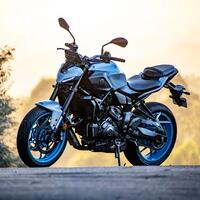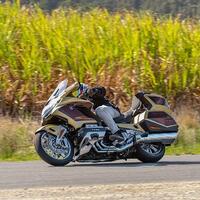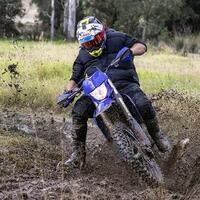
In 2025, the Ducati Monster finds itself in an interesting spot within Ducati's lineup. It’s not the headline act—those accolades belong to the jaw-droppingly beautiful Panigale and the deliciously mental Streetfighter. But while the Monster may not steal the spotlight, it quietly holds a legacy that outshines them all. The Monster is the bike that saved Ducati. Born from spare parts and a bit of audacious creativity, the original Monster pulled the company back from the brink, turning the trellis frame and air-cooled engine into an icon. It laid the groundwork for the Ducati we know today. Without it, Ducati’s current roster of dream machines might not even exist.
Fast forward to the present, and the Monster has evolved far beyond its humble parts bin origins. It’s leaner, meaner, and packing enough tech to make your head spin. Sure, it’s no longer wrapped in a trellis frame, and purists might grumble, but what you get now is a lightweight, high-performance machine that’s easily the best iteration of the Monster to date.
The base model of the Monster already offers a comprehensive set of electronic rider aids, including cornering ABS, traction control, wheelie control, launch control, and selectable ride modes. And then, of course, there’s the glorious 111-horsepower V-twin engine. In the premium SP trim, Ducati takes it a step further by adding Brembo Stylema brakes, a steering damper, sexy Öhlins suspension, and equally sexy Termignoni silencers among other splattering’s of premium fruit. I’ll tell you what I like most about the Monster: it’s the thing that struck me when I first rode the Monster in its current aluminium front-frame guise back in 2021. It’s its diminutive size. Hopping on the Monster is akin to jumping on a slightly porky enduro bike. One of the advantages of a V-twin engine is that they can be incredibly narrow—Ducati hasn’t lost sight of this, and the Monster is super slim. It’s also light, with a claimed dry weight of 177 kg. Add about 14 kg of fuel, and the wet weight sits around 191 kg.

To put this into perspective, say you’re eyeballing a big bike after progressing from your Ps and are hoping off, say, a Honda CB500 at 188 kg, a Suzuki SV650 at 198 kg, or an MT-07LA at 183 kg. You’re not looking at a huge increase in weight—if any—on your transition to a "big bike." So diminutive is the Monster that when you first plonk your rump on the thing, you’d be forgiven for thinking you’re astride a smaller-capacity bike rather than one with a thumping 937 cc V-twin.
Its small dimensions, grunty donk, and the lashings of high-end components mean the Monster is a formidable sports-riding tool. It’s fast, flickable, and fun. The brakes, as you’d expect from Brembo, are simply awesome, and with the Monster’s suite of rider aids at your disposal, it’s got your back if you let your throttle hand get the better of you.
Dial the rider aids down or switch the wheelie control off and the Monster becomes a hoons delight. It’s actually a fantastic all-rounder – it’ll happily cruise around town no problem, but slip yourself into sport mode and the Monster will happily oblige you with buckets of performance. There’s an undeniable consequence to inserting so much performance into such a small machine—you’re essentially sitting on the engine and that’s the heat. Yes, the infamous Ducati warmth. Thermal management has never been Ducati’s strong suit, and the Monster will toast your bits to a lovely golden brown sitting in traffic. It’s not as bad as the company’s Panigale, but it can get uncomfortable on a warm day. This is the price you must pay for such performance in such a compact package.

It may be a twin, but the Monster is not to be compared to the current crop of parallel twins from the Japanese manufacturers, which are becoming ever more popular among riders progressing to their unrestricted license or those looking for something relatively light and economical. Compared to the likes of Suzuki’s GSX-8S, Honda’s CB750 Hornet, or Yamaha’s MT-07HO, the Monster is several magnitudes higher on the performance scale—which isn’t surprising, considering the Monster SP’s much higher spec and substantially higher price point.
If small, light, and fast is what you’re chasing in a motorcycle, and you like your ride sans fairings, it’s hard to think of any bike that can match the Monster SP for the money. KTM’s 890 Duke R is a formidable opponent, as is Triumph’s Street Triple RS, but arguably neither of those comes with the prestige of owning a Ducati—let alone a bike that saved a company.































